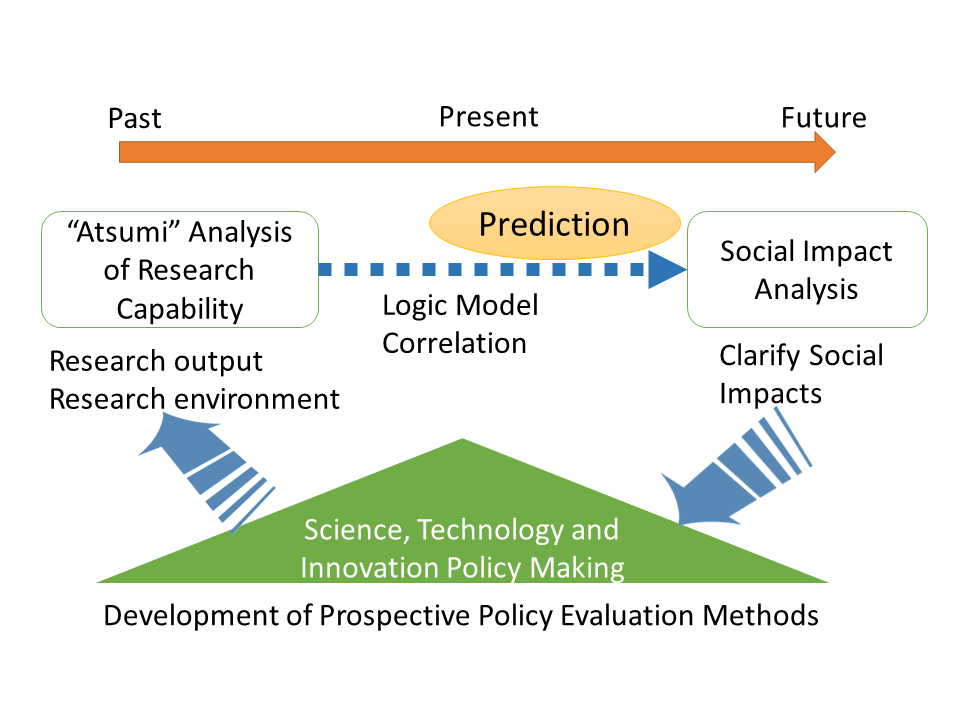R&D Projects
Forecasting of Social Impact by 'Atsumi' Analysis of Research Capability and Development of Policy Assessment Methods
Principal Investigator

- KOIZUMI Amane
Project Professor, Center for Novel Science Initiatives (CNSI), National Institutes of Natural Sciences
Objective
We set 5 goals to accomplish "Prediction of Social Impact by 'Atsumi' Analysis of Research Capability and Development of Prospective Policy Evaluation Methods".
Goal 1 Categorize and specify science, technology and innovation policies, “Atsumi” and social impacts for each level (Country, University, and Research team)
Goal 2 Propose a logic model that connects policies, “Atsumi” and social impacts listed in Goal 1. Identify all possible causes and effects.
Goal 3: Clarify the correlation between “Atsumi” of research capability and social impacts
Goal 4 Identify the relationship between each policy and “Atsumi” of research capability
Goal 5 Identify “Atsumi” indicator as a leading indicator for predicting specific future social impacts, and propose a relationship with policies and prospective evaluation methods.
Outline
In recent years, various policies for science, technology and innovation (STI) have been implemented to improve the research capabilities of universities and research institutions. In addition, it is essential to base evidence in policymaking, and EBPM (Evidence-Based Policy Making) is advocated especially in STI policy making. As a means of policy evaluation for improving the research capabilities of universities and research institutes, there are various indicators for analytical evaluation of research capabilities (such as top 10% papers, etc.) as shown in the expert papers in the Fifth Science and Technology Basic Plan. However, conventional analysis of research capabilities evaluates the current situation based on retrospective evidence that goes back to the past in the short term, such as quantity of research outputs and number of citations. It is difficult to make prospective evaluations that project medium- to long-term social impacts. For making prospective policy making, we should incorporate such indicators into evaluations.
What is needed now is an evidence-based policy assessment tool that can make forward-looking predictions about social impacts of research. Such assessment tool is expected for STI policies including analysis of the strengths of R & D investment (Funding), prediction of new emerging fields, and prediction of the social impacts of research. The purpose of this study is to predict social impacts of research and develop a prospective policy assessment method, using the "Atsumi" analysis of research capabilities proposed by our research team previously. We hypothesize that “Atsumi" indicator is the leading indicator for a particular "social impact” in future. Also, we propose a logic model for the relationship between policy making and “Atsumi”, and verify correlation between “Atsumi” and future social impacts.





